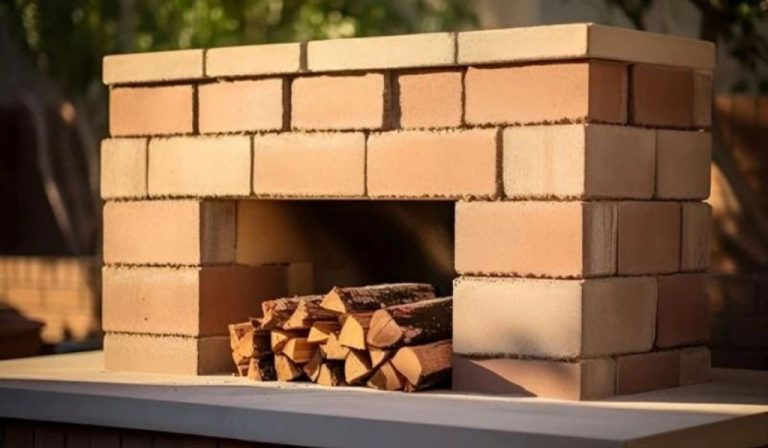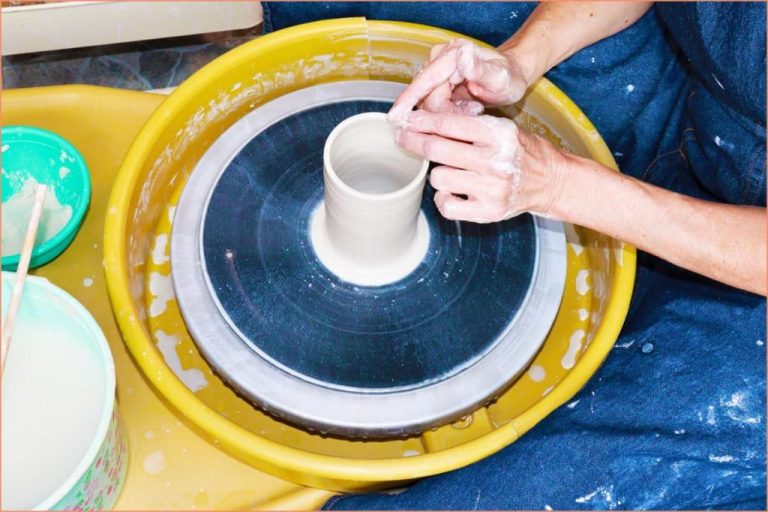How Are Burnt Clay Bricks Made?
Burnt clay bricks are a type of building material made from clay that is shaped and then fired at high temperatures in a kiln or furnace. The firing process hardens the clay, creating a durable ceramic material. Burnt clay bricks have been used in construction for thousands of years.
The use of clay for building purposes dates back to around 10,000 BCE when the first permanent structures were built in the Middle East. Ancient civilizations like the Egyptians, Babylonians, Greeks and Romans all used clay bricks extensively. The Romans even built kilns that could fire larger quantities of bricks more efficiently.
Burnt clay bricks continue to be an important and useful building material today. They have high compressive strength and durability, making them ideal for load-bearing walls, foundations, floors and more. Their modular size allows for versatile construction. Bricks are also fireproof, weather-resistant, affordable and recyclable.
Clay Extraction
Clay suitable for making burnt bricks is found in many places around the world. The most common sources are river banks, open pits, and underground mines. River banks often contain deposits of alluvial clay that have been washed downstream over time. Open pit clay mines involve digging out clay from open ground surfaces. Underground clay mines extract clay through a network of tunnels bored into the earth.
For river bank clay, front-end loaders are typically used to scoop up clay deposits. Conveyor belts then transport the clay to storage and processing facilities. In open pit mines, bulldozers and power shovels are used to remove layers of overburden to access clay seams. Hydraulic excavators dig out the clay which is then loaded into dump trucks for hauling. Underground clay mines rely on continuous miners, haulage equipment, and conveyors to extract and transport clay through tunnels.
The choice of clay extraction method depends on factors like location, clay quality and quantity, overburden thickness, and production capacity. Advanced techniques like hydrofracking may also be used to extract clay from beds deep below ground. The mined clay then undergoes preparation to improve plasticity before brick molding.
Clay Preparation
After the clay is extracted, it goes through a preparation process to remove impurities and make it suitable for brick making. This involves cleaning, crushing, mixing, and adding water and other ingredients.
The clay is first cleaned to remove pebbles, roots, grass and other debris. This is done by spreading the clay out and handpicking larger particles. The clay is also washed and filtered to remove finer impurities.
Next, the clay is crushed and ground into a fine powder to make the particles smaller and more uniform. This helps improve the consistency and workability of the clay.
The ground clay powder is then mixed with water in a pug mill or tempering pit. Water makes the clay plastic and gives it the right molding consistency. Other ingredients like sand or ash may also be added in small quantities to modify the clay properties.
The clay mixture is kneaded and mixed thoroughly until it achieves a homogeneous consistency. This prepared clay is then ready for the brick molding process.
Molding Bricks
Once the clay has been properly prepared, the next step is molding it into the shape of bricks. This is done using brick molds that are open at the top and bottom. The interior dimensions of the mold match the desired dimensions of the finished brick.
There are a few main methods used for shaping the clay into bricks:
- Soft-mud molding – The prepared clay retains some moisture and plasticity, allowing it to be pressed into molds. This is an automated process done by machines.
- Stiff-mud molding – The clay mixture loses some moisture, giving it more rigidity. It is forced into molds using high pressure.
- Extrusion – An auger forces the stiff clay out through a die, cutting bricks at the desired length.
- Dry-press molding – The clay is completely dried and pulverized into a powder before being compressed into very dense bricks.
The molding method used depends on the properties of the clay, production capacity, and desired brick characteristics. Automated mechanical processes allow for much higher volumes compared to manual molding. However, some artisan brickmakers still employ hand-molding methods for custom designs and textures.
Drying Bricks
The drying process is a critical step in burnt clay brick production. After bricks are molded, they contain a high amount of moisture from the original clay. This moisture must be slowly evaporated to avoid cracking and warping of the bricks. The bricks are dried until their moisture content reaches a suitable level for firing.
Drying conditions are carefully controlled. Bricks are dried slowly at temperatures between 30-80°C. Too rapid drying causes cracks and misshapen bricks. The relative humidity of the air during drying should be kept between 25-40%. Proper air circulation around the bricks is also important to achieve uniform drying.
Bricks can be dried naturally outdoors if weather conditions permit. However, most modern brick facilities use controlled artificial drying methods. Tunnel dryers are commonly used – bricks are loaded onto cars which move slowly through long heated tunnels over a period of 1-2 days. Some facilities may also use shed dryers or periodic kilns for drying.
The total drying time depends on the size and number of bricks loaded. Larger bricks require longer drying times. Artificial dryers allow the brickmaker to carefully control the drying conditions for optimal quality.
Firing Bricks
Once the green bricks have dried completely, they are ready to be fired in a kiln to permanently harden the clay through sintering. There are several types of kilns used to fire bricks:
Clamp kilns are one of the oldest and simplest kiln designs, constructed by stacking green bricks in a complex arrangement with firing channels between them. Fuel, like wood or coal, is burned in the channels to provide heat. This type of batch kiln allows bricks to be fired on site during construction.
Tunnel kilns are continuous process kilns where the bricks move slowly on carts or conveyors through a long, tunnel-like firing chamber. The temperature is carefully controlled across different zones, allowing efficient, large-scale production.
Hoffman kilns are oval-shaped continuous kilns where the fire moves in a circular path, while the bricks move in the opposite direction towards the cooling zone. This counterflow allows heat recycling and greater fuel efficiency.
Firing turns the green bricks into strong, hardened finished bricks through a process called sintering, which chemically and physically transforms the clay at high temperatures. Temperatures can range from 900°C to 1200°C depending on the clay composition.
Firing typically takes between 24-48 hours to allow even distribution of heat throughout the kiln and prevent defects like cracks or warping. Carefully controlling the rising temperature, soaking time at maximum temperature, and cooling rate are critical to quality brick production.
Cooling and De-hacking
After bricks have been fired in the kiln, they need to be cooled down gradually before they can be removed. The cooling process is important to prevent the bricks from cracking due to sudden temperature changes.
The kilns are shut off and the bricks are left to cool inside the kiln chamber for 24-48 hours. This allows the bricks to cool slowly in the insulated kiln environment from around 1000°C to about 200°C. Slow cooling prevents thermal shock and cracking of the bricks.
Once the bricks have cooled sufficiently, they are ready for de-hacking. This involves carefully removing the bricks from the kiln and any hacks (platforms) they were stacked on. De-hacking is traditionally done manually using hand tools, though some modern plants may use specialized automated equipment.
Workers remove the bricks stack by stack while supporting them properly. The bricks are then loaded onto trays or carts for further processing and storage. Care is taken to avoid any damage to the bricks during de-hacking.
Testing and Quality Control
Testing is an important step to ensure burnt clay bricks meet the required quality standards. After bricks are fired and cooled, samples from each production batch undergo a series of tests:
Testing for defects and flaws: Bricks are visually inspected and tapped with a hammer to check for cracks, chips, deformities, holes, and other defects that could compromise strength and durability. Defective bricks are removed.
Compressive strength testing: A sample of bricks is tested in a compression testing machine to determine if it meets the minimum strength standard for the brick classification. The bricks are crushed to measure the failure load.
Water absorption testing: Bricks are weighed, soaked in water for 24 hours, then weighed again. The increase in weight determines the water absorption percentage. This indicates the brick’s resistance to weathering.
Efflorescence testing: Bricks are soaked in water then allowed to dry. This checks if white salt deposits appear on the surface, which could cause unsightly staining.
Dimensional conformity testing: Samples are measured to ensure they meet size specifications. Variations could lead to improper bricklaying.
Stringent quality control ensures substandard bricks are never used for construction. Production controls like visual inspection of raw materials, maintaining even kiln temperatures, and periodic equipment calibration also help achieve consistent quality standards.
Transportation and Storage
Transporting finished bricks from the factory to the construction site requires careful planning and execution. Bricks are heavy and can be damaged if not moved properly. Most bricks are transported on pallets via truck to protect them during transit. Loaders and forklifts are used to move pallets of bricks around safely. Straps or shrink wrap are applied to bricks on pallets to prevent shifting and rubbing during transport.
Proper storage of bricks on arrival is also crucial. Bricks should be kept dry by storing them indoors or under a waterproof covering if left outside. Make sure bricks are not exposed to rain, snow or other moisture to avoid damage. Stack bricks neatly on a flat, solid surface rather than directly on the ground. Place wood boards between layers of bricks to prevent cracking or chipping if the load shifts. Avoid stacking pallets of bricks too high, as the weight can cause bricks on the bottom to crack. Rotate stock to use older bricks first before they deteriorate. With careful transportation and storage, bricks will arrive at the construction site intact and ready for use.
Modern Innovations
The burnt clay brick manufacturing process has evolved significantly in recent decades through the introduction of new technologies and innovations focused on automation, mechanization, and environmental sustainability.
One key innovation has been the development of automated brick making machines and robots. These machines can extrude, cut, and stack bricks rapidly with minimal human intervention, increasing efficiency and reducing labor costs. Advanced sensors and computer controls enable an optimized, precision manufacturing process.
Mechanization has also continued to improve, with conveyor systems, forklifts, and robotic arms now handling most of the heavy lifting and transport traditionally done manually. This reduces physical strain on workers while speeding up the workflow.
Sustainability has become a priority, with new techniques to recycle wastewater, reclaim heat energy, and utilize renewable fuels in the kilns. Energy-efficient dryers and kilns have been engineered to conserve fuel. Emissions control systems filter particulates and other pollutants.
These modern innovations allow burnt clay brick manufacturers to increase productivity, reduce costs, improve quality control, and minimize their environmental impact. While staying true to the fundamental principles used for millennia, the industry continues to evolve and optimize the brick making process through technology.



